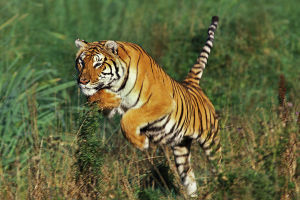World Wildlife Day was officially established by the United Nations General Assembly in 2013.
It aligns with the signing of the Convention on International Trade in Endangered Species of Wild Fauna and Flora (CITES) on March 3, 1973.
March 3rd provides a platform to celebrate the diverse species of the world while raising awareness about critical challenges such as habitat destruction, over-exploitation, and climate change.
Millions of Species Yet to Be Discovered
There are over 8.7 million species of plants and animals on Earth, and scientists believe many more are still undiscovered. Luzon, the Philippines’ largest island, holds the highest concentration of unique mammals, with 93% of its land mammals found nowhere else.
However, Brazil is the most biodiverse country, home to diverse rainforests like Tijuca and 60% of the Amazon, which harbors around 55,000 plant species along with a wealth of vertebrates and invertebrates.
Biodiversity: Vital for Ecosystem Functioning
Biodiversity is essential for maintaining ecosystem health, providing crucial services like clean air, water, and soil. Costa Rica, a region with the highest bio-intensity contains about 6% of the world’s biodiversity, despite occupying only 0.03% of the Earth’s surface. The Osa Peninsula, for example, is home to 2.5% of the planet’s biodiversity in just 0.001% of its land area.
Endangered Species Facing Extinction
Many plants and animals, such as elephants, rhinos, gorillas, sea turtles, and coral species, are at risk of extinction due to habitat destruction, over-exploitation, and climate change. The International Union for Conservation of Nature (IUCN) reports that one-quarter of all species on Earth are threatened with extinction.
For instance, the population of western lowland gorillas has decreased by more than 60% over the last 20-25 years. Conservation efforts like anti-poaching initiatives and habitat restoration are critical in saving these species.
Wild Plants and the Carbon Cycle
Plants play an essential role in regulating the Earth’s climate by absorbing and storing carbon dioxide through carbon sequestration. Forests and wetlands are vital carbon sinks, with wetlands storing carbon up to 55% faster than tropical forests. The plants and trees on our planet help reduce atmospheric CO2, mitigating the effects of climate change.
Protecting Wildlife Is Crucial for the Planet’s Health
Wildlife and their habitats are integral to the Earth’s ecosystems, offering benefits such as clean water, fertile soil, and pollination. Wetlands and coral reefs, for example, protect coastal communities from storms and erosion. Unfortunately, human activities continue to place tremendous pressure on wildlife.
Safeguarding these habitats is not just a moral obligation but a necessity for our survival. We rely on nature’s services, from bees to rainforests to sharks, for our own well-being and survival.
What You Can Do on World Wildlife Day
On World Wildlife Day, taking action to protect wildlife and their habitats helps ensure the survival of endangered species, supports healthy ecosystems, and benefits the well-being of our planet—and ourselves. Here are some meaningful ways you can contribute:
Live Sustainably: Small choices make a big difference. Consider whether the products you buy are sustainably sourced and make an effort to reduce single-use plastics. Educate yourself about how to minimize your environmental impact.
Raise Awareness: Share the importance of wildlife conservation with your friends, family, and social media followers. The more people know, the more they can help.
Support Conservation Efforts: Whether by volunteering your time or making a donation, conservation organizations rely on your support. Every bit helps make a difference.
Explore Local Wildlife: You don’t need to travel far to enjoy nature. Take a walk in a local park or nature reserve to observe and learn about the native species around you.
Reduce Your Carbon Footprint: Simple changes, like walking, biking, or using public transport, can significantly reduce your carbon emissions and have a positive impact on the environment.
World Wildlife Day on DocuBay: The Glory of Earth's Bioreserves
Video by DocuBay - Streaming Documentaries


